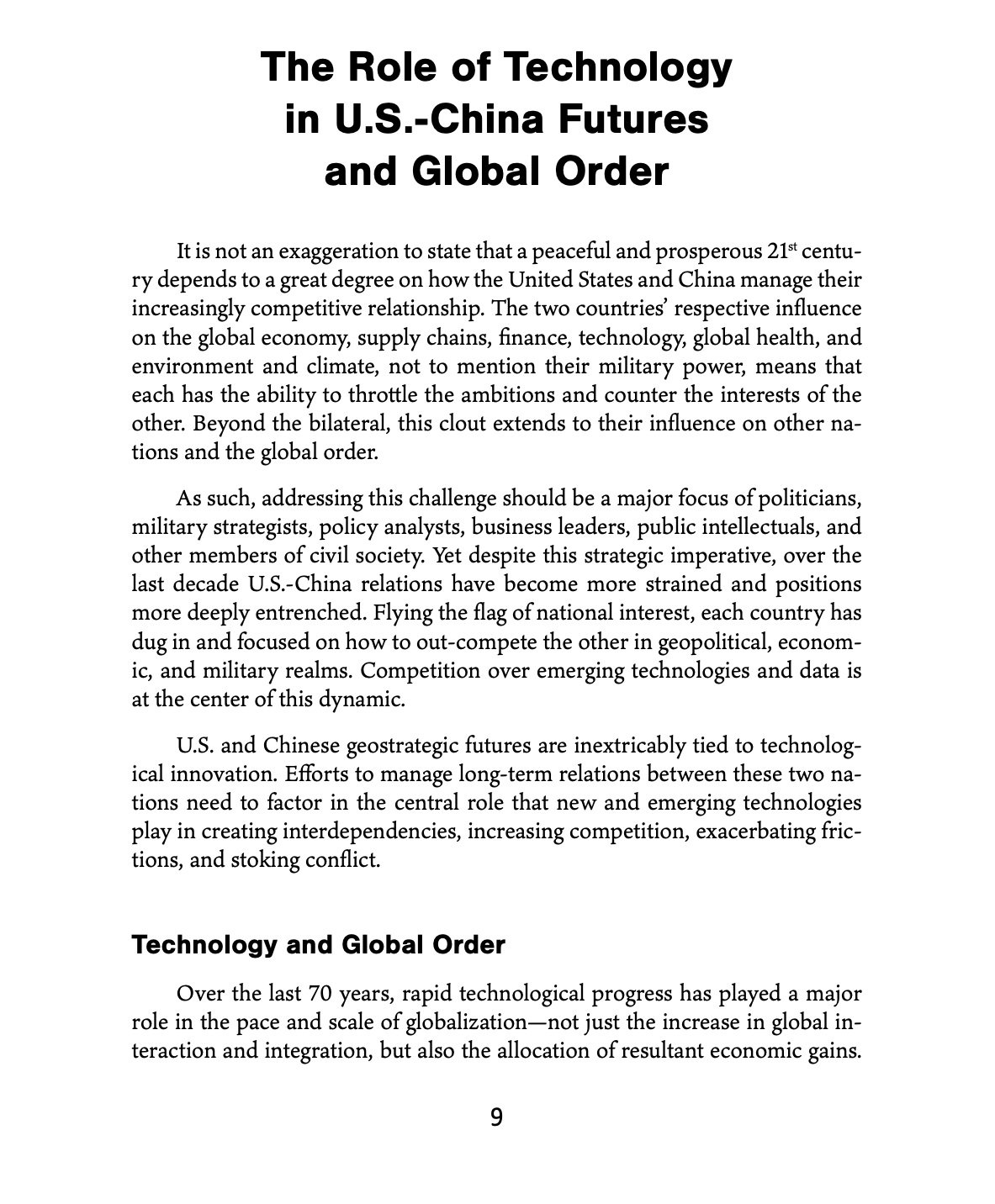Dignity, Technology, and Global Order: New Approaches to Complex Challenges
We are at a moment of intensifying risk to the global order. The perennial threats to international peace and stability—inequality, economic insecurity, military competition, irredentism, and ideological divisions—are all on the rise. These threats are intertwined with and exacerbated by the profound impacts of emerging and frontier technologies that not only play critical roles in states’ security but also have complex, often deleterious, impacts on social equity and equality, human flourishing, and human dignity.
Yet governments and the broader policy community have been unable to effectively formulate and implement solutions to these and other critical challenges to global security. New organizational models and mechanisms are needed. This project uses the increasingly antagonistic U.S.-China relationship and the role the two countries play not only as powerful shapers of international relations, but also as influential developers and deployers of emerging technologies, as an entry point to explore new approaches to complex challenges.
Download specific sections of the paper below:
Introduction: Towards a New RAND Moment
This section presents on overview of the project, starting with the failures of strategic thinking in U.S. strategy towards China, the role that technologies will continue to play in exacerbating tensions, and poses the questions:
Given that emerging technologies have significant national security implications and serve as accelerants and causes of change, and that China and the United States have divergent ideologies and value systems, how can the two countries work towards an acceptable long-term future with shared norms for ethical technology development and use?
As the liberal order shifts and evolves, what principles and underlying beliefs can serve to buttress or improve it? How might the concept of dignity serve as a cross-cultural foundation upon which to engage on ethical uses of technology and inform strengthened principles for global order?
What sorts of new intellectual architectures or mechanisms are capable of addressing this and other complex, long-term issues?
The Role of Technology in U.S.-China Futures and Global Order
U.S.-China geostrategic futures are inextricably tied to emerging technologies. Managing the U.S.-China relationship necessitates addressing the roles that these technologies play in both military and societal arenas and overcoming unique technology governance challenges. This section also presents a comprehensive emerging technology taxonomy, explored in detail in the appendices, including respective military and societal implications.
Organizational Inadequacy
Why are members of the policy community failing to address the acute challenges explored in previous sections? Organizational inadequacies, rather than lack of talent, result in prioritizing near-term tactical policy issues over those that are long-term and strategic. Most mainstream policy organizations operate with funding structures, incentives, and time horizons that are not amenable to addressing complex, multidisciplinary, long-time-horizon, strategic issues.
Lessons from Innovative Organizations
What can we learn from historical organizations that were successful at achieving breakthrough innovations in other fields? Bell Labs, ARPA, Xerox PARC, and the RAND Corporation, as well as more recent examples, all offer valuable lessons about stimulating innovative thinking in the face of complex, long-term challenges. Ultimately there are five key success factorsthat emerged from our analysis.
A New Model
Dignity: A Rationale and Research Agenda
Structure and Organization
This project is a first step on the path to a new “RAND Moment,” where an organization is born from an acute need that is not currently being effectively addressed. These three sections lay out the case for such a new organization. In addition to the structural elements presented in the previous section, the organization’s mission must align with a positive vision that keeps researchers focused on the horizon.
Cutting across and underpinning all of these complex challenges are fundamental questions about social relations and human dignity. Without a shared understanding of, and basic agreement upon, what is valued at the core of our shared humanity, progress on transnational challenges is nearly impossible. This extends to relations between nations: what should we expect of other nations and they of us? In terms of the future of the global order, a vision and set of principles that are sufficiently resilient in the face of technological change, climate change, social justice, migration, and public health must be based upon some shared assumptions about what it means to be human in society.
Appendix E: The Social Dimensions of Dignity





